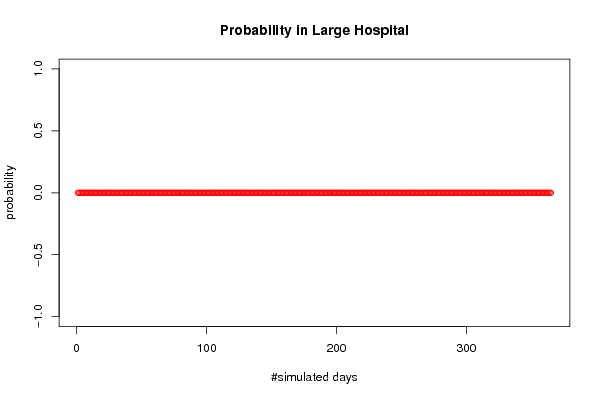Free Statistics
of Irreproducible Research!
Description of Statistical Computation | |||||||||||||||||||||||||||||||||||||||||||||||||||||||||||||||||||||||||
|---|---|---|---|---|---|---|---|---|---|---|---|---|---|---|---|---|---|---|---|---|---|---|---|---|---|---|---|---|---|---|---|---|---|---|---|---|---|---|---|---|---|---|---|---|---|---|---|---|---|---|---|---|---|---|---|---|---|---|---|---|---|---|---|---|---|---|---|---|---|---|---|---|---|
| Author's title | |||||||||||||||||||||||||||||||||||||||||||||||||||||||||||||||||||||||||
| Author | *The author of this computation has been verified* | ||||||||||||||||||||||||||||||||||||||||||||||||||||||||||||||||||||||||
| R Software Module | rwasp_babies.wasp | ||||||||||||||||||||||||||||||||||||||||||||||||||||||||||||||||||||||||
| Title produced by software | Exercise 1.13 | ||||||||||||||||||||||||||||||||||||||||||||||||||||||||||||||||||||||||
| Date of computation | Sat, 11 Oct 2008 16:13:00 -0600 | ||||||||||||||||||||||||||||||||||||||||||||||||||||||||||||||||||||||||
| Cite this page as follows | Statistical Computations at FreeStatistics.org, Office for Research Development and Education, URL https://freestatistics.org/blog/index.php?v=date/2008/Oct/12/t1223763273j6q5122umr4tgpl.htm/, Retrieved Fri, 17 May 2024 02:41:20 +0000 | ||||||||||||||||||||||||||||||||||||||||||||||||||||||||||||||||||||||||
| Statistical Computations at FreeStatistics.org, Office for Research Development and Education, URL https://freestatistics.org/blog/index.php?pk=15380, Retrieved Fri, 17 May 2024 02:41:20 +0000 | |||||||||||||||||||||||||||||||||||||||||||||||||||||||||||||||||||||||||
| QR Codes: | |||||||||||||||||||||||||||||||||||||||||||||||||||||||||||||||||||||||||
|
| |||||||||||||||||||||||||||||||||||||||||||||||||||||||||||||||||||||||||
| Original text written by user: | |||||||||||||||||||||||||||||||||||||||||||||||||||||||||||||||||||||||||
| IsPrivate? | No (this computation is public) | ||||||||||||||||||||||||||||||||||||||||||||||||||||||||||||||||||||||||
| User-defined keywords | |||||||||||||||||||||||||||||||||||||||||||||||||||||||||||||||||||||||||
| Estimated Impact | 197 | ||||||||||||||||||||||||||||||||||||||||||||||||||||||||||||||||||||||||
Tree of Dependent Computations | |||||||||||||||||||||||||||||||||||||||||||||||||||||||||||||||||||||||||
| Family? (F = Feedback message, R = changed R code, M = changed R Module, P = changed Parameters, D = changed Data) | |||||||||||||||||||||||||||||||||||||||||||||||||||||||||||||||||||||||||
| F [Exercise 1.13] [Exercise 1.13 (Wo...] [2008-10-01 13:28:34] [b98453cac15ba1066b407e146608df68] F P [Exercise 1.13] [Taak 1 Computatio...] [2008-10-11 22:00:15] [819b576fab25b35cfda70f80599828ec] - P [Exercise 1.13] [Taak 1 Computatio...] [2008-10-11 22:02:21] [819b576fab25b35cfda70f80599828ec] F P [Exercise 1.13] [Taak 1 Compuation...] [2008-10-11 22:03:56] [819b576fab25b35cfda70f80599828ec] - P [Exercise 1.13] [Taak 1 Computatio...] [2008-10-11 22:05:14] [819b576fab25b35cfda70f80599828ec] - [Exercise 1.13] [Taak 1 Computatio...] [2008-10-11 22:06:41] [819b576fab25b35cfda70f80599828ec] - [Exercise 1.13] [Taak 1 Computatio...] [2008-10-11 22:08:00] [819b576fab25b35cfda70f80599828ec] F [Exercise 1.13] [Taak 1 Computatio...] [2008-10-11 22:09:26] [819b576fab25b35cfda70f80599828ec] - [Exercise 1.13] [Taak 1 Computatio...] [2008-10-11 22:10:48] [819b576fab25b35cfda70f80599828ec] F [Exercise 1.13] [Taak 1 Computatio...] [2008-10-11 22:13:00] [e08fee3874f3333d6b7a377a061b860d] [Current] - [Exercise 1.13] [Taak 1 Computatio...] [2008-10-11 22:18:42] [819b576fab25b35cfda70f80599828ec] - [Exercise 1.13] [Taak 1 Computatio...] [2008-10-11 22:20:24] [819b576fab25b35cfda70f80599828ec] - P [Exercise 1.13] [Taak 1 Computatio...] [2008-10-13 11:01:01] [819b576fab25b35cfda70f80599828ec] - P [Exercise 1.13] [Taak 1 Computatio...] [2008-10-13 11:03:34] [819b576fab25b35cfda70f80599828ec] - P [Exercise 1.13] [Verbetering: 80%] [2008-10-18 15:10:04] [b85eb1eb4b13b870c6e7ebbba3e34fcc] | |||||||||||||||||||||||||||||||||||||||||||||||||||||||||||||||||||||||||
| Feedback Forum | |||||||||||||||||||||||||||||||||||||||||||||||||||||||||||||||||||||||||
Post a new message | |||||||||||||||||||||||||||||||||||||||||||||||||||||||||||||||||||||||||
Dataset | |||||||||||||||||||||||||||||||||||||||||||||||||||||||||||||||||||||||||
Tables (Output of Computation) | |||||||||||||||||||||||||||||||||||||||||||||||||||||||||||||||||||||||||
| |||||||||||||||||||||||||||||||||||||||||||||||||||||||||||||||||||||||||
Figures (Output of Computation) | |||||||||||||||||||||||||||||||||||||||||||||||||||||||||||||||||||||||||
Input Parameters & R Code | |||||||||||||||||||||||||||||||||||||||||||||||||||||||||||||||||||||||||
| Parameters (Session): | |||||||||||||||||||||||||||||||||||||||||||||||||||||||||||||||||||||||||
| par1 = 365 ; par2 = 100 ; par3 = 15 ; par4 = 0.6 ; | |||||||||||||||||||||||||||||||||||||||||||||||||||||||||||||||||||||||||
| Parameters (R input): | |||||||||||||||||||||||||||||||||||||||||||||||||||||||||||||||||||||||||
| par1 = 365 ; par2 = 45 ; par3 = 15 ; par4 = 0.8 ; | |||||||||||||||||||||||||||||||||||||||||||||||||||||||||||||||||||||||||
| R code (references can be found in the software module): | |||||||||||||||||||||||||||||||||||||||||||||||||||||||||||||||||||||||||
par1 <- as.numeric(par1) | |||||||||||||||||||||||||||||||||||||||||||||||||||||||||||||||||||||||||











